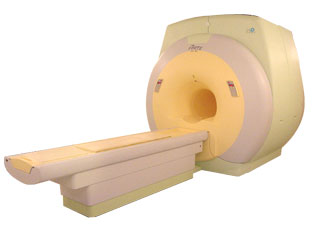 | Info
Sheets |
| | | | | | | | | | | | | | | | | | | | | | | | |
 | Out-
side |
| | | | |
|
| | | | | |  | Searchterm 'Sequences' was also found in the following services: | | | | |
|  |  |
| |
|

From ISOL Technology
'Ultra high field MR system, it's right close to you.
FORTE 3.0T is the new standard for the future ultra high field MR system.
If you are pushing the limits of your existing clinical MR scanner, the FORTE will surely take you to the next level of diagnostic imaging.
FORTE is the core leader of the medical technology in the 21st century. Proving effects of fMRI that cannot be measured with MRI less than 2.0T.'
Device Information and Specification
CLINICAL APPLICATION
Whole body
CONFIGURATION
Short bore compact
128 x 128, 256 x 256, 512 x 512, 1024 x 1024
| |  | | | | | | | | |
|  |  | Searchterm 'Sequences' was also found in the following services: | | | | |
|  |  |
| |
|
Rectal staging is necessary for the preoperative assessment of intra- and extramural tumor infiltration or the decision for adjuvant radio-chemotherapy.
One indication of MRI with luminal contrast enhancement is small bowel enteroclysis after duodenal intubation for visualization of inflammatory bowel wall thickening and other complications.
"Double contrast" enhancement of the bowel lumen is the administration of plain water or water with methylcellulose along with heavily T2 weighted sequences or contrast enhanced T1 weighted sequences.
Several oral contrast agents have been used for small bowel MRI: Mannitol, metamucil, locust bean gum, and PEG. All provide sufficient bowel distension and homogeneity, but suffer from side effects such as diarrhea. The volume of PEG or mannitol administered must be not too large in order to achieve the best compromise between distension and acceptance by the patient.
MR colonography with positive bowel lumen enhancement
requires higher concentrations of paramagnetic agents compared to the
available dedicated enteral contrast agents, IV compounds are used to dope water enemas for this purpose.
Some investigators advocate negative bowel enhancement
with Contrast Agents to suppress high signal bowel content in MRCP ( Magnetic resonance cholangiopancreaticography ).
The use of a mixture of metamucil and 20 ml of gadolinium chelate provides good homogeneity and good tolerance without diarrhea. | | | |  | |
• View the DATABASE results for 'Gastrointestinal Imaging' (6).
| | |
• View the NEWS results for 'Gastrointestinal Imaging' (1).
| | | | |  Further Reading: Further Reading: | Basics:
|
|
| |
|  | |  |  |  |
| |
|
(GRAPPA) GRAPPA is a parallel imaging technique to speed up MRI pulse sequences. The Fourier plane of the image is reconstructed from the frequency signals of each coil ( reconstruction in the frequency domain).
Parallel imaging techniques like GRAPPA, auto-SMASH and VD-AUTO-SMASH are second and third generation algorithms using k-space undersampling. A model from a part of the center of k-space is acquired, to find the coefficients of the signals from each coil element, and to reconstruct the missing intermediary lines. The acquisition of these additional lines is a form of self-calibration, which lengthens the overall short scan time. The acquisition of these k-space lines provides mapping of the whole field as well as data for the image contrast.
Algorithms of the GRAPPA type work better than the SENSE type in heterogeneous body parts like thoracic or abdominal imaging, or in pulse sequences like echo planar imaging. This is caused by differences between the sensitivity map and the pulse sequence (e.g. artifacts) or an unreliable sensitivity map. | |  | |
• View the DATABASE results for 'Generalized Autocalibrating Partially Parallel Acquisition' (2).
| | | | |
|  |  | Searchterm 'Sequences' was also found in the following services: | | | | |
|  |  |
| |
|
Knee and shoulder MRI exams are the most commonly requested musculoskeletal MRI scans. Other MR imaging of the extremities includes hips, ankles, elbows, and wrists. Orthopedic imaging requires very high spatial resolution for reliable small structure definition and therefore places extremely high demands on SNR.
Exact presentation of joint pathology expects robust and reliable fat suppression, often under difficult conditions like off-center FOV,
imaging at the edge of the field homogeneity or in regions with complex magnetic susceptibility.
MR examinations can evaluate meniscal dislocations, muscle fiber tears, tendon disruptions, tendinitis, and diagnose bone tumors and soft tissue masses. MR can also demonstrate acute fractures that are radiographically impossible to see. Evaluation of articular cartilage for traumatic injury or assessment of degenerative disease represents an imaging challenge, which can be overcome by high field MRI applications. Currently, fat-suppressed 3D spoiled gradient echo sequences and density weighted fast spin echo sequences are the gold-standard techniques used to assess articular cartilage.
Open MRI procedures allow the kinematic imaging of joints, which provides added value to any musculoskeletal MRI practice. This technique demonstrates the actual functional impingements or positional subluxations of joints. In knee MRI examinations, the kinematical patellar study can show patellofemoral joint abnormalities.
See also Open MRI, Knee MRI, Low Field MRI. | | | | | | | | | | |
• View the DATABASE results for 'Imaging of the Extremities' (5).
| | | | |  Further Reading: Further Reading: | | Basics:
|
|
News & More:
| |
| |
|  |  | Searchterm 'Sequences' was also found in the following services: | | | | |
|  |  |
| |
|
| |  | |
• View the DATABASE results for 'Interpulse Times' (7).
| | | | |
|  | |  |  |
|  | |
|  | | |
|
| |
 | Look
Ups |
| |